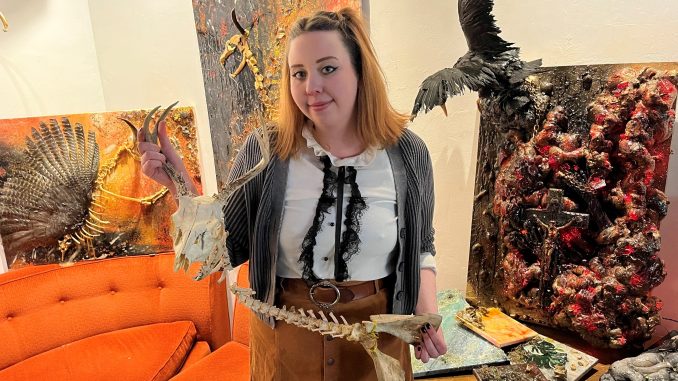
On June 4, 2021, after suffering a series of mysterious and increasingly concerning medical episodes, Maddie Quillin had a massive seizure in her car on the side of Interstate 5, an experience she refers to as when she “died.”
Though she didn’t technically die that day, her word choice is understandable. Prolonged and severe seizures like she experienced can be fatal or cause permanent neurological damage, which she fortunately avoided. Exhaustive medical investigation led to a diagnosis of an extreme form of a rare, degenerative, hereditary disorder called Ehlers-Danlos syndrome. She was declared disabled, and had to leave her established career in the medical field and scrap plans to attend nursing school that fall.
Her social life was impacted by leaving her job, and by necessary lifestyle changes for her condition which, on bad days, necessitates the use of a crutch or wheelchair. In the midst of all that, her partner broke up with her. It was a lot for the then-27-year-old to handle.
But in the wake of Quillin’s proverbial “death,” something unexpected happened: Maevyn Corvid was born.
Maevyn Corvid is Quillin’s artist name, and her work is a mishmash of different media and found objects—including furs, feathers, skulls, bones and other animal anatomical bits—that can fairly be described as both macabre and marvelous. She uses only ethically sourced items that would otherwise be thrown away or left to rot, and her art—which she collectively calls Putris Immoderata (which she says is Latin for “decaying obsession”)—is informed by her unique perspectives.
“It’s all centered around the circle of life and death and taking something that otherwise would be wasted or lost to the world, and giving it a second chance at something new,” she said during a visit to Idea Fab Labs (IFL), where she was recently selected for the maker space’s Resident Artist Incubator Program.
Before her diagnosis, Quillin said she had no experience with art and never aspired to be an artist, yet her work displays the style and technique of someone who has been at it for years. Her first pieces were a pair of large canvases incorporating goat horns, turkey feathers and assorted bones called “Beasts of a Feather.” On one canvas, a strange beast is—in the artist’s words—“moving from the dark into the light, extending a hand with a flower to get what it needs from the universe.” Its counterpart on the second canvas “is moving from the light into the dark, leaving the trail of broken glass in its wake.”
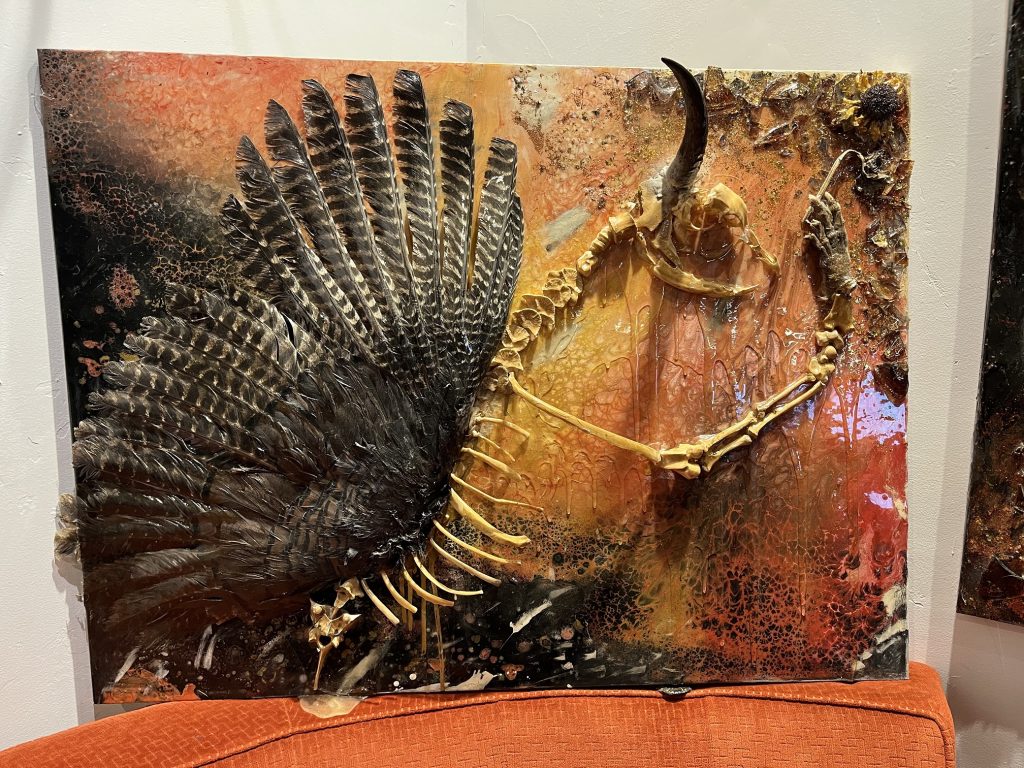
“[Making ‘Beasts’] was my way of working my way through my breakup and my frustration with the universe,” she said. “I’d worked so hard to get to a place where I was working a good job, loved what I was doing. … It had taken me a long time to get there, and it was all gone overnight for nothing, and I was mad.”
A friend saw the pieces and encouraged Quillin to apply to be a vendor at the 2021 Bizarre Bazaar—an annual holiday art and craft showcase produced by the Chikoko art/fashion collective. She dismissed the idea at first, but eventually submitted and was accepted.
Quillan said she was nervous. Not only had she never shown her work before, but she’d also told only a few people about her illness or having to use a wheelchair. Nevertheless, her premiere was a smashing success.
“Chico gave me the biggest, warmest, friendliest hug in the world. I left that weekend given a purpose,” she recalled.
Quillin threw herself into her art after that, creating a body of work that soon outgrew her house—a 240-square-foot tiny home she calls the “Shed of the Dead” and shares with two dogs and a goat—and spurred her to rent space at IFL. She’s since exhibited elsewhere in Chico, and at events in Sacramento, Nevada City and the Bay Area.
Quillin is working on a whole new collection as part of the IFL residency program, which is meant to help artists incorporate digital fabrication tools and techniques—laser cutters, 3-D printing, electronics, LED lights, robotics, etc.—into their work. She’ll also conduct some free-to-the-public seminars and workshops on some of her established techniques (like taxidermy). The program will culminate with gallery exhibits and events this spring at IFL Chico and IFL Santa Cruz.
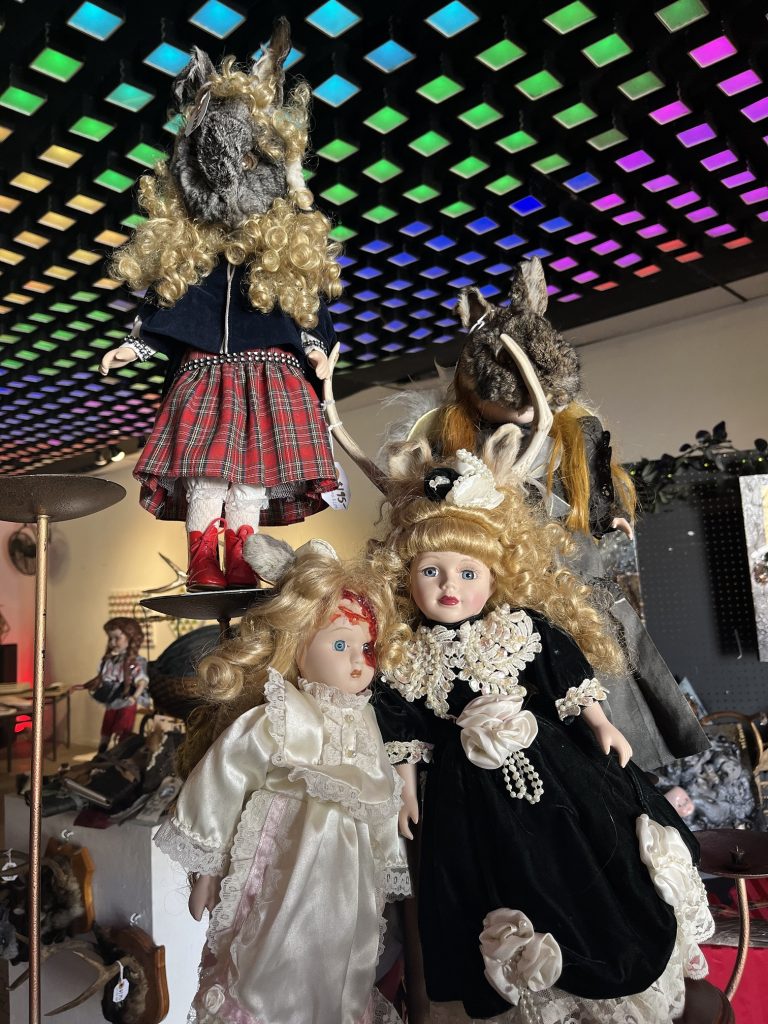
Though much of Quillin’s work has an organic feel to it, she said the skills she’s learning will broaden her horizons. She uses only what she has or can ethically/legally attain. Since it’s difficult to source some animal parts and others are against the law to possess (“Fish and Game does not mess around,” she said), she makes useful facsimiles via 3-D printing. The IFL exhibition she’s planning will also incorporate sensors, LED lights she’ll program herself, interactive elements and even robotics.
More than anything, Quillin’s art-making has given her some direction and peace after a cataclysmic life—and death—event. “Once I accepted the fact I don’t have control over the majority of things in life, and none of us do, it was like the most freeing cathartic thing ever, because I was able to say ‘I’m gonna try to do what makes me happy.’ And realistically, that’s kinda playing with dead things, and other people seem to appreciate it.”

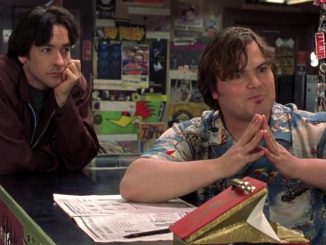
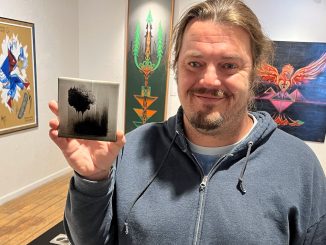
Be the first to comment